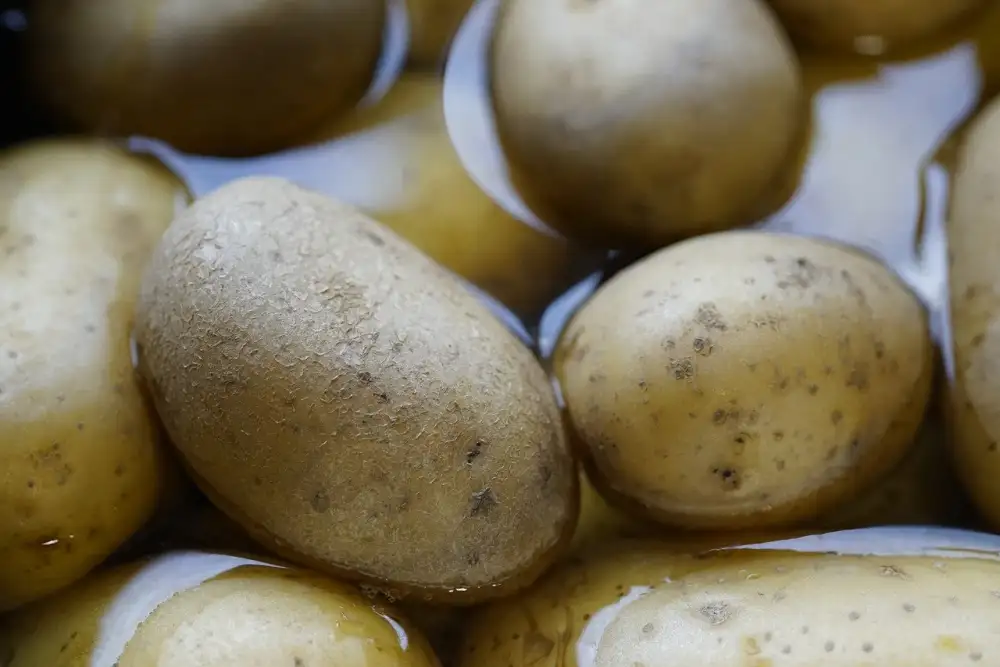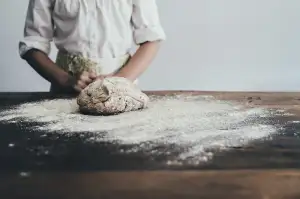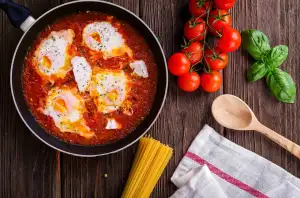Perfecting the Art of Boiling Potatoes: A Step-by-Step Guide for Flawless Spuds

- Choose the right potatoes for boiling: opt for waxy varieties like Yukon Gold or red potatoes.
- Wash the potatoes thoroughly under running water to remove any dirt or debris.
- Peel the potatoes if desired, or leave the skins on for added texture and nutrients.
- Cut the potatoes into evenly sized chunks to ensure they cook at the same rate.
- Place the potatoes in a large pot and cover them with cold water, adding a pinch of salt for seasoning.
- Bring the water to a boil over high heat, then reduce the heat to a simmer.
- Cook the potatoes for about 15-20 minutes or until they are fork-tender.
- Drain the potatoes in a colander and let them sit for a few minutes to allow excess moisture to evaporate.
- Serve the boiled potatoes hot with your favorite toppings or incorporate them into other dishes.
Choose the right potatoes for boiling: opt for waxy varieties like Yukon Gold or red potatoes.
When it comes to boiling potatoes, choosing the right variety is crucial for achieving the desired texture and flavor. Opt for waxy potatoes like Yukon Gold or red potatoes as they hold their shape well during cooking, making them ideal for boiling. These varieties have a lower starch content compared to russet potatoes, which tend to break down more easily when boiled. Waxy potatoes are perfect for dishes where you want the potatoes to remain intact, such as potato salads or side dishes. Their creamy texture and buttery flavor make them a popular choice for boiling.
Wash the potatoes thoroughly under running water to remove any dirt or debris.
Before boiling your potatoes, it is crucial to wash them thoroughly under running water to remove any dirt or debris that may be lingering on the skin. This step not only ensures cleanliness but also helps eliminate any potential contaminants that could affect the taste and quality of the final dish. By scrubbing the potatoes gently with a vegetable brush or using your hands, you can effectively clean the surface and prepare them for cooking. Remember, clean produce is essential for safe and delicious meals, so take the time to wash your potatoes before moving on to the next steps in the boiling process.
Peel the potatoes if desired, or leave the skins on for added texture and nutrients.
When it comes to boiling potatoes, one key decision is whether to peel them or leave the skins on. Peeling the potatoes is a personal preference and depends on the dish you are preparing. While peeling removes the outer layer of the potato, leaving the skins on can add a rustic texture and boost the nutrient content. Potato skins are rich in fiber, vitamins, and minerals like potassium and iron. So, if you want to maximize the nutritional value of your boiled potatoes, consider leaving the skins on for that extra dose of goodness.
Cut the potatoes into evenly sized chunks to ensure they cook at the same rate.
To ensure that the potatoes cook evenly, it is crucial to cut them into uniform chunks. This step is essential as it helps all the pieces cook at the same rate, preventing some from being undercooked while others are overdone. By cutting the potatoes into evenly sized chunks, you guarantee that they will reach the desired level of tenderness simultaneously. This not only ensures a consistent texture throughout but also enhances the overall presentation of your dish.
Place the potatoes in a large pot and cover them with cold water, adding a pinch of salt for seasoning.
When it comes to boiling potatoes, the first step is crucial. Place the potatoes in a large pot and cover them with cold water. Adding a pinch of salt at this stage helps to season the potatoes from the inside out as they cook. The cold water ensures even cooking and prevents the potatoes from becoming mushy on the outside while still being raw on the inside. This simple yet essential step sets the foundation for perfectly boiled potatoes every time.
Bring the water to a boil over high heat, then reduce the heat to a simmer.
To cook the potatoes to perfection, it is crucial to bring the water to a boil over high heat. This initial high heat helps kickstart the cooking process, ensuring that the potatoes are evenly cooked. Once the water reaches a rolling boil, reduce the heat to a simmer. Simmering allows the potatoes to cook gently and evenly without breaking apart or becoming mushy. This method helps maintain the shape and texture of the potatoes, resulting in perfectly boiled spuds that are tender yet firm enough to hold their shape when mixed into salads or other dishes.
Cook the potatoes for about 15-20 minutes or until they are fork-tender.
Once the water reaches a boil, reduce the heat to a simmer and let the potatoes cook for approximately 15-20 minutes. To check if they are ready, insert a fork into a potato chunk; if it slides in easily with little resistance, they are done. Be careful not to overcook them as they can become mushy. Cooking times may vary depending on the size of the potato chunks, so it's essential to monitor them closely towards the end of the cooking process.
Drain the potatoes in a colander and let them sit for a few minutes to allow excess moisture to evaporate.
Once the potatoes are cooked to perfection, it is crucial to drain them in a colander. Allowing the potatoes to sit for a few minutes post-draining is essential as it helps excess moisture evaporate, ensuring they maintain their ideal texture. This step is vital for preventing soggy boiled potatoes and achieving a fluffy consistency that pairs well with various dishes.
Serve the boiled potatoes hot with your favorite toppings or incorporate them into other dishes.
Once your boiled potatoes are ready, it's time to enjoy them in various ways. You can serve them hot with a dollop of butter, a sprinkle of fresh herbs like parsley or chives, and a pinch of black pepper. For added richness, consider topping them with sour cream or grated cheese. Boiled potatoes also make a great addition to salads, soups, stews, and casseroles. Their creamy texture and mild flavor complement a wide range of dishes, making them a versatile ingredient in your culinary repertoire. Experiment with different seasonings and pairings to discover new and delicious ways to incorporate boiled potatoes into your meals.
Published: 05. 04. 2024
Category: Recipes



